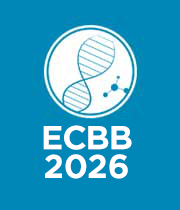Title: Biotechnological explorations of phyto-drugs against mdr bacterial infections from medicinal plants of West Bengal, India.
Abstract:
Escherichia coli, Salmonella enterica, Acinetobacter baumannii, Pseudomonas aeguginosa, Enterococcus faecium and Klebsilla pneumoniae etc mediated infections were not cured by conventional antibiotics due to presence of multiple large and small MDR plasmids with >10 mdr (amp, bla, cat, str, aac, aph, aad) genes and drug efflux genes (tetA/B/C, acrAB-TolC, mexAB-OprM) in those pathogens. MDR genes inactivate antibiotics through phosphorylation, acetylation, adenylation or antibiotic cleavage. Chromosomal gene mutations (rpoB, gyrA/B) in Mycobacteriaum tuberculosis were reported for drug resistance to conventional anti-tuberculosis drugs. Thus, the development of new antibiotics is urgently needed. Plants secret anti-metabolites to retard the growth of soil and water bacteria and are an ideal source of new antibiotics. A Cassia fistula bark saponin polybromophenol compound (CU1) inhibited (IC50=20-30µg/ml) RNA polymerase from Escherichia coli as well as Mycobacterium tuberculosis as compared to refampicin. Similarly, well-cultivated Suregada multiflora root extract was found exceptionally active (18 fold than natural sources) against MDR bacteria and TLC-purified NU2 glycoside inhibited E. coli DNA topoisomerase I at 10-20µg/ml and RNA polymerase to some extent at >20µg/ml. Ethanol extracts of Jatropha gossipifolia root, Shorea robusta inner bark, and Trapa bispinota fruit peel also have good MDR antibacterial activities. Phyto-chemical in each extract was abundant and gave a distinct band on preparative TLC (20cmx15cm) needed for large quantity purification for characterization and commercialization. MDR-bacteria were isolated from Ganga River water, rain water, chicken meat, milk and human hair and at least resistant to three antibiotics comprising ampicillin, tetracycline, chloramphenicol, streptomycin, erythromycin and ciprofloxacin. Distinct plasmid was isolated from MDR-bacteria and purified through agarose gel elution method and further transformed into drug-sensitive E. coli DH5a giving distinct colonies on LB-agar-antibiotic plate. However, ampicillin (~2000cfu/ml), cefotaxime (~50cfu/ml) and imipenem (~2cfu/ml) resistant bacteria have also been isolated from Ganga river water and inhibited by Phyto extracts. We think antibiotic void will increase due to a few reasons: (1) mdr genes are accumulated in large conjugative plasmids with many IS elements; (2) the spread of mdr genes in bacteria is increasing at ~5%/year and (3) mdr genes protect gut microbiota from antibiotics. Thus, Phyto-drugs discovery is logistic and demanding. We proved that MDR-CURE, an antibacterial Phyto-Drugs combination is useful to tackle multi-drug resistant human nail infections. A toxicological study against molly fishes and HeLa cells suggested 95% purified phytochemicals were less toxic up to 50µg/ml concentration.
Audience Take Away Notes :
- The lecture will be very informative on abundance in MDR bacteria in Ganga river water as well as in chicken meat and milk as well as its present status on mdr enzymes that inactivate antibiotics.
- A details purification and characterization of phyto-drugs through MASS, HPLC, NMR, FTIR will be focused.
- Toxicological study using HeLa cells and molly fishes will be discussed. Further, few human clinical trials on MDR nail infections will be reported



